The first ever Michelin Guide was created by the Michelin brothers in 1900, and 35,000 copies were circulated at the World Fair in Paris. Distributed free of charge, it gave motorists convenient, reliable information with restaurant reviews. Its featured two or three-line summaries and an extensive system of symbols, the most revered of which became its globally coveted stars. Restaurants under review receive zero to three stars for the quality of their food, based on Michelin’s inspectors’ five criteria: quality of ingredients, mastery of flavour and cooking techniques, personality of the chef, value for money, and consistency between visits. Not considered when awarding stars are interior decor, table settings, or service quality. These instead are indicated by the number of ‘covers’ it receives, represented by a fork and spoon symbol.

Michelin Guides are a series of guide books which have been published by the French tyre company Michelin for more than a century. The term normally refers to the annually published Michelin Red Guide, the oldest European hotel and restaurant reference guide, which awards Michelin stars for excellence to a select few establishments. The Guide was first printed in 1900 by the Michelin brothers, André and Edouard, who owned the Michelin tyre company in France and was given away for free. Covering France, it listed things that would be useful for motorists (less than 3,000 cars at that time were registered in France), such as the location of petrol stations, mechanics and hotels. Nowadays it helps to shape the fate of chefs and restaurants across the world.
In 1926, the guide began to award stars for fine dining establishments. Initially, there was only a single star awarded. The system was extended in 1933 to a system of one, two or three stars, which has remained to this day. Finally, in 1936, the criteria for the starred rankings were published. According to the Guide, one star signifies “a very good restaurant”, two stars are “excellent cooking that is worth a detour”, and three stars mean “exceptional cuisine that is worth a special journey”. The listing of starred restaurants is updated once a year. The acquisition or loss of a star can have dramatic effects on the success of a restaurant. The Guide steadily extended coverage beyond France throughout much of Euro-Europe. In the 1950s Red Guides appeared for the first time in their current form. The Red Guides first appeared as follows: 1900 France, 1952 Spain, 1956 Italy, 1957 Benelux, 1964 Germany, 1973 Spain-Portugal, 1974 Great Britain & Ireland, 1982 Europe, 1992 Ireland, 1994 Switzerland,1995 Portugal. In 1909, the Michelin Guide for France saw its first English-language version published.

During World War I, publication of the guide was suspended. After the war, revised editions of the guide continued to be given away until 1920. The company’s website recounts the story that André Michelin, visiting a tyre merchant, noticed copies of the guide being used to prop up a workbench. Based on the principle that “man only truly respects what he pays for”, the brothers decided to charge a price for the guide, which was about 750 francs or $2.15 in 1922. They also made several changes, notably: listing restaurants by specific categories; the debut of hotel listings (initially only for Paris); and the abandonment of advertisements in the guide. Recognizing the growing popularity of the restaurant section of the guide, the brothers recruited a team of inspectors to visit and review restaurants, who were always careful in maintaining anonymity.
The Michelin Guide has its share of critics who believe that the Guide is biased towards French Restaurants, is arbitrary in the selection of restaurants that earn Michelin stars and out of touch with current dining trends. However, the Guide has adapted to cultural changes and has just released its first-ever Singapore edition in which it has awarded stars to street stalls for the first time.
In 2006 Michelin dipped its toe in the waters outside Europe with its New York guide, later expanding to some other major US cities, and to parts of China and Japan. Measuring Michelin stars by head of population is a tricky thing, since Michelin does not cover all countries in full e.g. in Japan certain cities and regions are covered, but not the whole country. In such cases the population that should be used is the population of the areas covered by Michelin, not the population of the entire country. By this criteria France does not have the most stars per head, Switzerland is ahead of it as is city state Luxembourg (as Monaco would be if counted separately from France).
Michelin only operates in certain regions of the world so restaurants will only be evaluated if the guide covers the region in which they are located. Inspection and rating of a restaurant is determined by anonymous inspectors who give no warning of their arrival or attendance and are barred from speaking to journalists. They all have an extensive background in the culinary arts, and many are former chefs. They all must pass official Michelin Guide training in France. Unlike many food critics, they do not take notes while eating, and will often visit a restaurant multiple times, unaccompanied, before reaching a conclusion.
The inspectors will be assessing the restaurant from the first moment they arrive calculating how quickly they are seated, whether they are served attentively and evaluating whether the food is cooked and presented above the expectation of an average meal. No one knows for sure what it takes to earn a Michelin star, but there are stories online from chefs who have earned at least one star. A meticulously clean kitchen, a staff that pays the utmost attention to detail, and dishes that are prepared with a French accent tend to receive attention from Michelin. To get on the company’s radar, restaurants can build a reputation with local bloggers and food writers (and then with larger publications) to get their name out there.
Restaurants who earn a Michelin star can expect a lot of new business and international media attention as well as a lot more pressure. Earning a Michelin Star can take an emotional toll on chefs as they strive to maintain their starred status after being recognised by the guide. Advancing to two and then three stars can take years, even decades to occur. While a star is sure to bring in an influx of new customers it can also bring many changes to the business, there will be a magnifying glass on the restaurant, the food, the service and the chef who becomes more of apersonality than a chef. Customers may become more snobby and demanding and line cooks may have to become more robotic to maintain the consistency that Michelin demands of its starred establishments.
The French chef Paul Bocuse, one of the pioneers of nouvelle cuisine in the 1960s, said, “Michelin is the only guide that counts”. In France, each year, at the time the guide is published, it sparks a media frenzy which has been compared to that for the annual Academy Awards for films. Media and others debate likely winners, speculation is rife, and TV and newspapers discuss which restaurant might lose, and who might gain a Michelin star, with three stars being the maximum a restaurant can attain.
The Michelin Guide also awards Rising Stars, an indication that a restaurant has the potential toqualify for a star, or an additional star. Operating since 1955, the Guide has also highlighted restaurants offering “exceptionally good food at moderate prices”, a feature now called “Bib Gourmand”. They must offer menu items priced below a maximum determined by local economic standards. Bib (Bibendum) is the company’s nickname for the Michelin Man, its corporate logo for over a century.
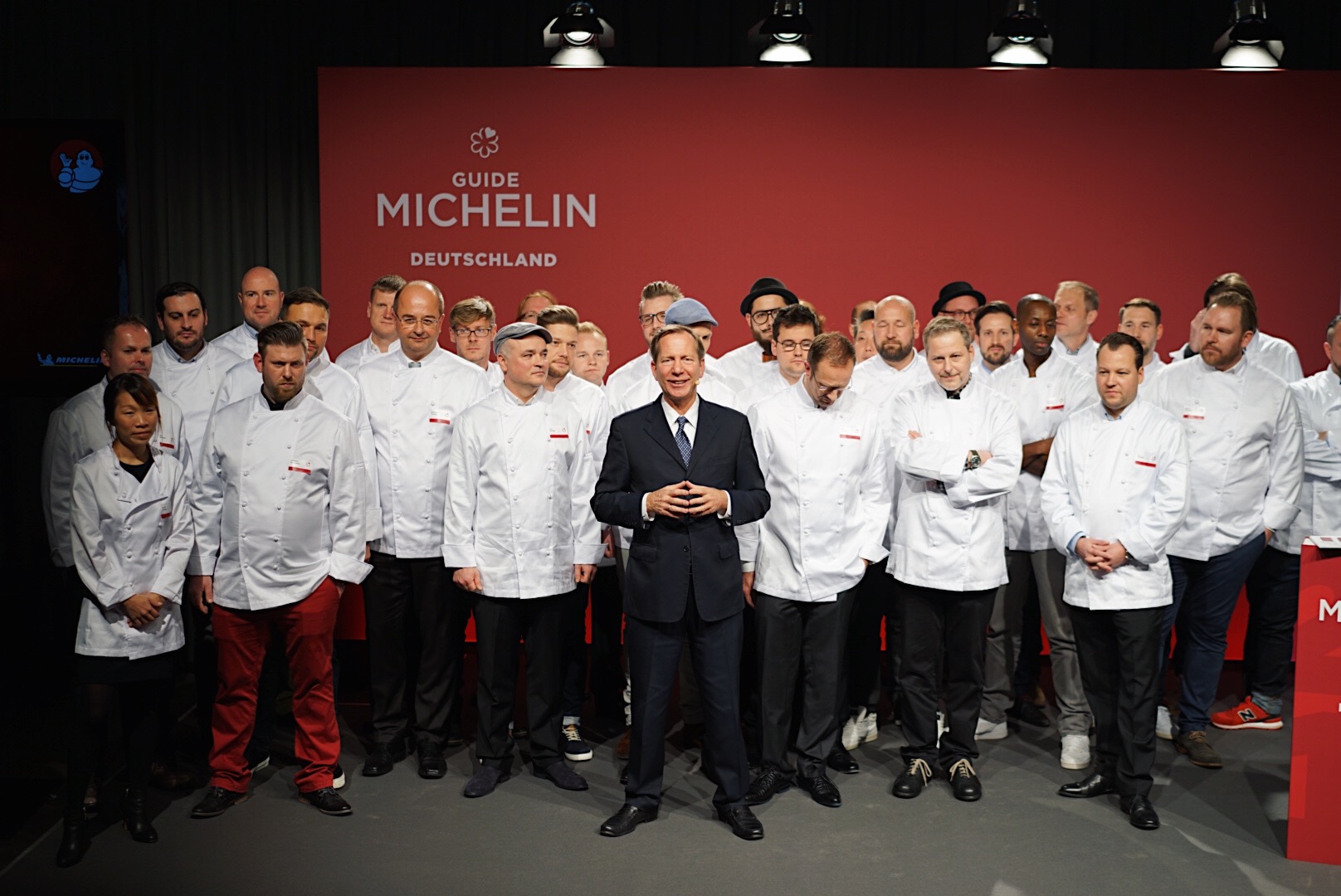
Featured in the Michelin Guides are restaurants from the Philippines, Japan, Burma, Cambodia and Thailand as well as Vietnam. Capturing the essence of French cuisine, La Maison 1888 is the first restaurant in Vietnam that features a Michelin-starred chef, namely Pierre Gagnaire. Michelin is extending its focus from contemporary French cuisine and has become more international incorporating innovative and contemporary foods from a range of different cultures from high end to street stall. The selection is being reflected in the variety of Michelin Guides that now extend beyond Europe to Asia with focussed editions that reflect the quality and originality of local cuisine. The skill and professionalism of chefs that work in Asia, who design and create superlative dishes with ingredients produced within their region can now hope to be recognised as competitors in the race for the Michelin stars.
AZABU YUKIMURA – JAPAN
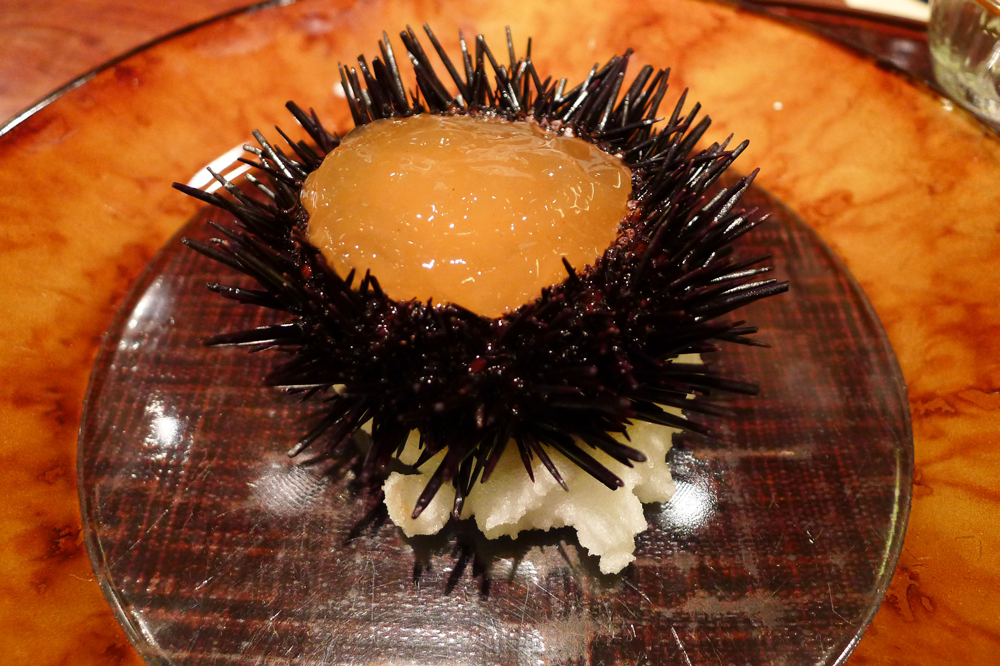
Restaurant Azuba Yukimura owes its accolades to Chef Patron Jun Yukimura who has been awarded three Michelin stars. He accomplished his training and skills in Kyoto where he worked several years as the Head Chef of Muromachi Wakuden before he brought parts of the key team with him to Tokyo for the opening of his own Azabu Yukimura. The tiny Tokyo shop has just ten seats at a counter and a table for four. The cuisine is kaiseki with Yukimura’s signature all over it and the style of dining is kappo kaiseki where guests dine at a counter rather than in a private room. The environment is friendly and relaxed and the Chef talks plenty with his guests so they can expect an evening of pure pleasure combined with some of the best Japanese cuisine available anywhere in the world. All ingredients come from Kyoto and it is only the very best produce like matsutake mushrooms and matsozaka beef which reaches the table. A visit in winter is recommended to experience the grilled snow crab.
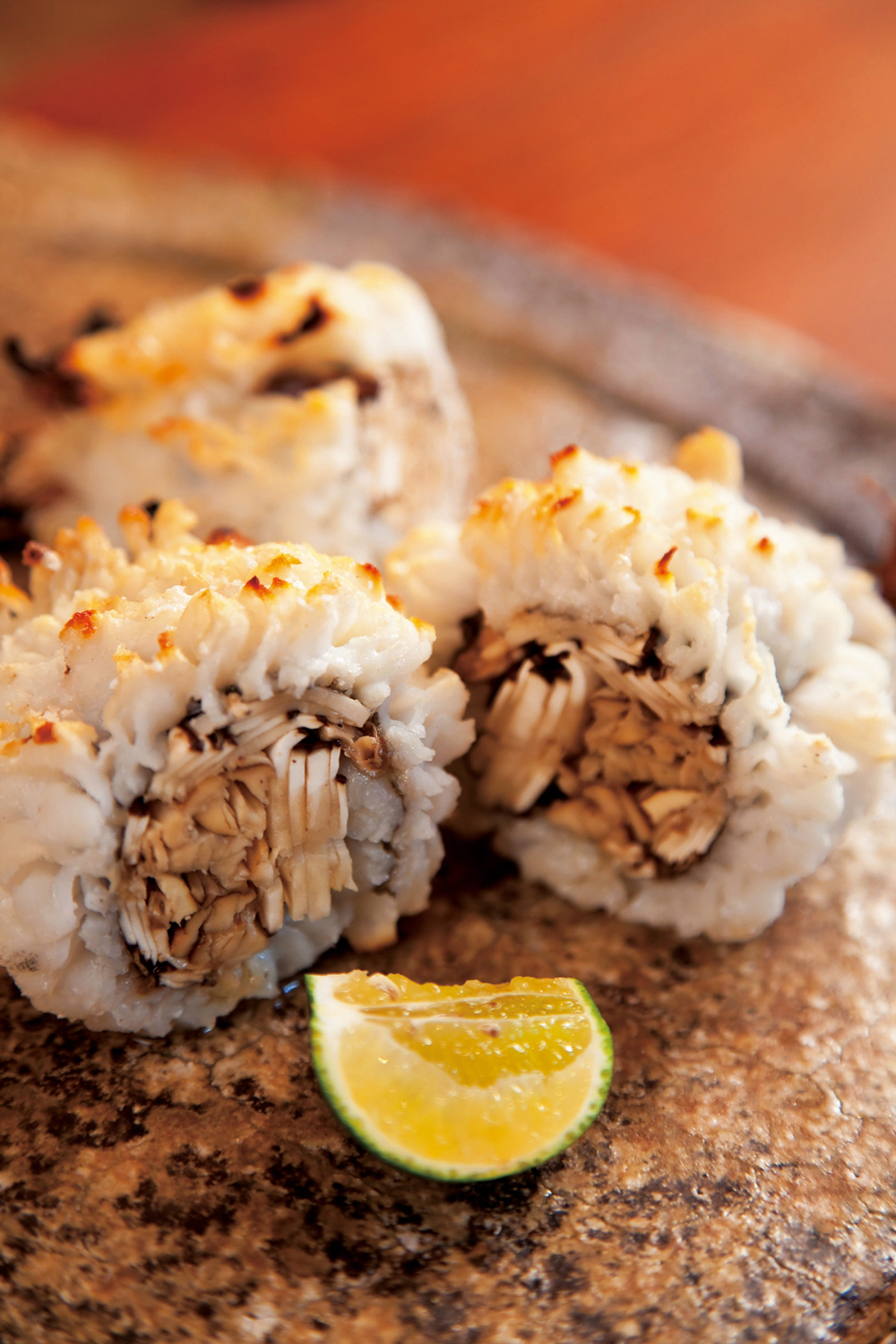
BACCHANALIA - HONG KONG
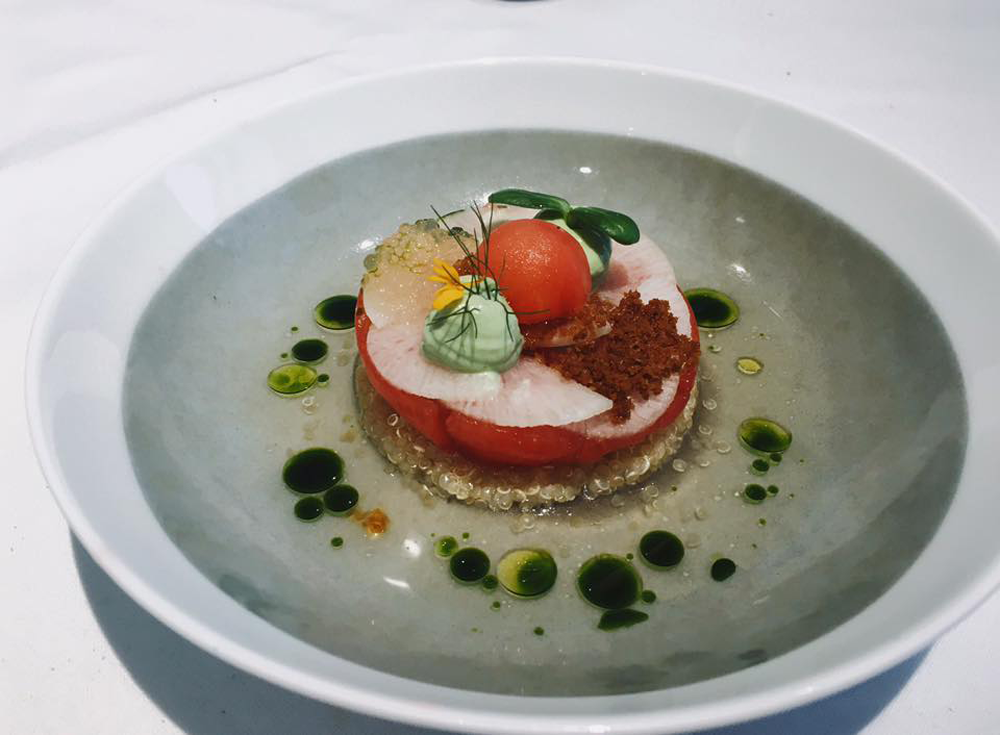
The Kitchen at Bacchanalia, a small 36-seater contemporary French restaurant, has been awarded some big accolades including a Michelin Star in the Singapore Michelin Guide 2017 and 2016, Indoguna Best Restaurant 2015 in World Gourmet Summit, and Best New Restaurant 2014 (Western) for The Peak Gourmet and Travel. Located in the trendy food enclave of Hong Kong Street and led by Head Chef Australian Luke Armstrong, who has ten years of culinary experience working in award winning restaurants such as the One Michelin Star Pied a Terre in London, two Michelin Star The Ledbury in London, and Sergio Herman’s world renowned three-Michelin star Oud Sluis in The Netherlands. The design encourages a relaxing atmosphere with no boundaries between the multiple kitchen counters and dining tables, reducing the distinction between guests, servers and chefs. Highlight dishes include Wild Turbot with Barbeque Fennel and Manzanilla sauce, and Pineapple Tomato with Elder Flower and Gazpacho Consommé. Chef Luke Armstrong’s menu takes a clean, elegant, non-fanciful approach.

BRACI - SINGAPORE
Braci, awarded a Michelin Star in the Singapore Michelin Guide 2017, is perched on the top two floors of a newly-restored heritage shop-house by the Singapore River. It is an exclusive Italian hideaway in the heart of bustling Boat Quay overlooking the river. Braci, meaning ‘embers’ in Italian uses wood as the main cooking method to redefine and uplift classic Italian cuisine. The casual –luxe 20 seater openkitchen restaurant and 30 seater bar is led by Chef Beppe De Vito. The open concept kitchen allows diners to interact with the chef and have a full view of their meal being prepared in front of them. Some of the signatures dishes include the Hand Dived Scallop, Beef Tartare, Risotto, Pork Cheek, Seabass, Roasted Pigeon and Pumpkin Pie. Braci food is real, passionate and fresh served in an intimate and it is not difficult to understand why it was awarded a Michelin star.

CORNER HOUSE - SINGAPORE
Set amongst the lush green palm trees of Singapore’s Botanic Gardens, the Corner House is a restaurant that pays homage to its surrounds with a menu that celebrates the plant kingdom. Described by chef and coowner Jason Tan as ‘gastro-botanica’, the contemporary cuisine gives equivalent weight on the plate to protein and botanical elements. The two-story black and white bungalow where the restaurant resides was built in 1910 and was once the home of leading botanist E J H Corner, Assistant Director of the Botanic Gardens from 1929 to 1945. The gastro-botanica menu offers an eight-course ‘Discovery Experience’ degustation menu described as “exquisitely prepared food that distils and sharpens the essential flavour and character of ingredients. The meats, poultry and seafood used are fastidiously sourced and chosen; and botanicals, in particular, are given prominence. By giving greater weight to the preparation of these botanicals, gastrobotanica cuisine achieves a delicate balance between the main ‘protein’ element and the garnishing on the plate. Flavours are animated with subtle and precise layering to build up ‘momentum’.”
CRYSTAL JADE GOLDEN PALACE - SINGAPORE

Crystal Jade Golden Palace is one of many Singaporean Restaurant which locals are familiar with. It is the restaurant chain where Chinese families celebrate birthdays, or head to when craving Xiao Long Bao, Cantonese barbecued meats, noodles and congee. Now Crystal Jade Golden Palace had moved up in the world as one of the few Chinese restaurants in Singapore to be awarded the Michelin Star. The dining space is luxe- tall ceilings, silvery tablecloths and accents of shades of berry, chandeliers and light stands. The menu is extensive with multiple pages dedicated to a variety of premium ingredients from bird’s nest, abalone, Buddha Jumps Over The Wall, to live seafood. Golden Palace also specialises in Teochew dishes with highlights including Chilled Yellow Cream Crab in Teochew style, Sautéed Fresh Crab Meat with Egg White, Sliced Roasted Suckling Pig with Foie Gras, Baked Lamb Rack with Red Wine & Black Pepper, Chilled Foie Gras with Japanese Sake, Stir Fried Ramen with Lobster in XO Sauce, as well as Sugar-Coated Yam.
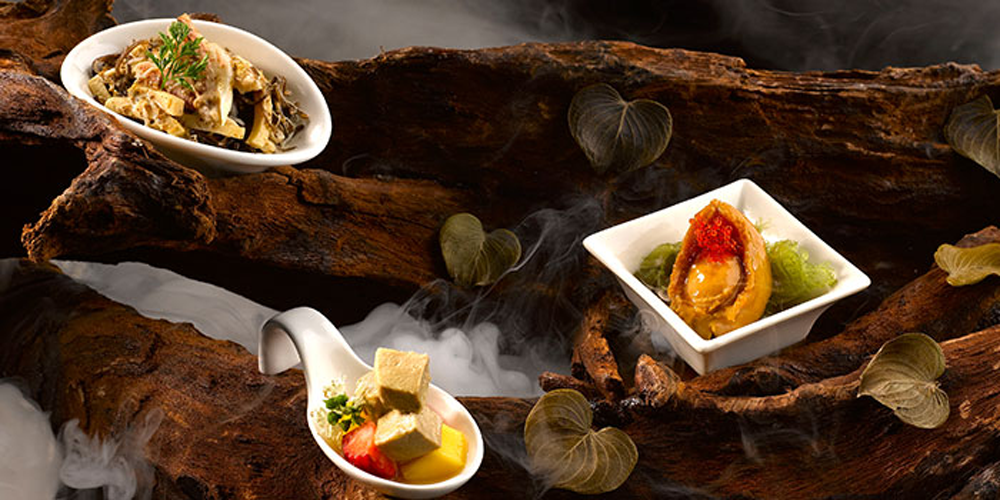
CANDLENUT - SINGAPORE

Candlenut Singapore is the world’s first and only Michelin-starred Peranakan Restaurant. Their new premises have been designed by world-renowned architect and designer, Paola Navone, and boasts a classy-type al fresco dining area and an eight-seat private room. The restaurant is helmed by Chef Malcolm Lee and for those who prefer to leave it to the chef, there’s an option for a 10-course tasting menu for dinner. Favourites from Candlenut’s signature Peranakan Ah-ma-kase dinner tasting menu include the Red Lion Snapper Fillet with Black Green Mango Sambal and Ginger Flower and the King Tiger Prawn with Fresh Chilli Sambal and Charred Garlic Chives. The Babi Pongteh, a stewed pork with fermented bean and the Ayam Buah Keluak, braised local chicken with Peranakan Signature Black Nut Sambal are particular favourites with guests. Diners can choose from more than 40 appetisers, mains and desserts from the a la carte menu for lunch and dinner, Candlenut hits a high note in balancing traditional Peranakan fare with a modern way of cooking and presentation.
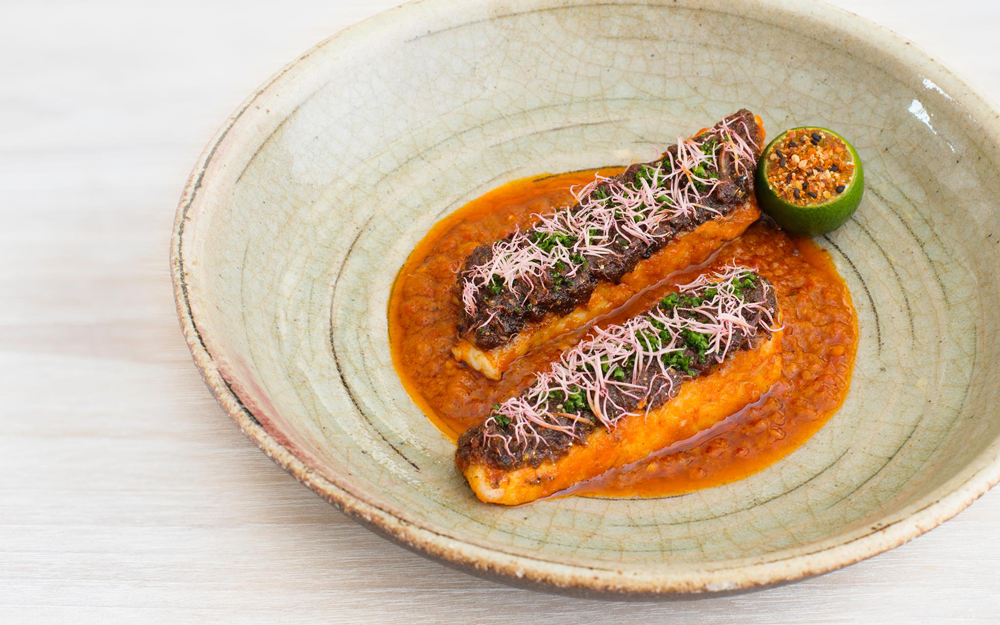
ITHAA RESTAURANT - MALDIVES
The Hurawalhi Island Resort in the Maldives houses the world’s largest underwater restaurant. The “5.8” undersea restaurant named after its watery location is set 5.8 meters (18 feet) below the lagoon. The architects MJ Murphy specialise in aquarium design and previously constructed a similar underwater restaurant at the Conrad Maldives Ranglai Island Resort. The restaurant, which seats up to 16 guests, will allow diners to take in their marine surroundings through a transparent, domed ceiling as they chose from the multi-course tasting menu. To enter the restaurant guests enter a little hut on the jetty and climb down a spiral staircase. Just inches away, through the glass, there are fish of every colour and shape imaginable. Overseeing the resort’s cuisine is executive chef Shannon Batten, a New Zealander who has cooked for Bill Clinton, the British royals, Rod Stewart, Bob Geldof, Neil Young, the Rolling Stones, and foreign heads of state.

JOËL ROBUCHON TOKYO - JAPAN
Joël Robuchon Restaurant is one of three Michelin-starred Joël Robuchon restaurants and is located in Tokyo’s Ebisu district. The experience is all about swank and glitz, and Joël Robuchon Restaurant lives up to that promise splendidly, plushly decorated in champagne gold, with Baccarat chandeliers and crystalstudded walls. Famous for its cuisine actuelle, in which the food is made to taste of itself, the French cuisine of the Joël Robuchon Restaurant reflects its elegant simplicity and is an experience that wows all five senses. The restaurant is run by the multi-talented and skilled Director de Cuisine Alain Verzeroli, who has managed the kitchen since 1999 with support and back-up from Executive Chef Yuichirou Watanabe who is both creative and very skilled when it comes to perfect preparations of French contemporary cuisine served. Several of the Robuchon classics can be found on the menu, but also more local creations. The overall experience, with impeccable service combined with a cuisine where almost every single dish is extraordinary, sums up for one of the best restaurants in the world and an absolute must reservation.
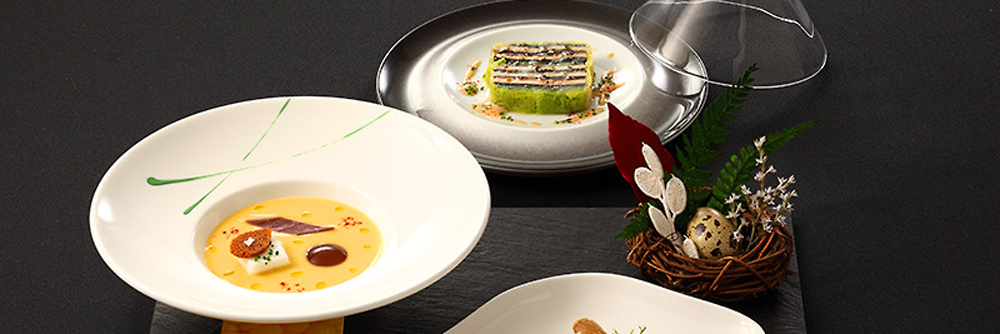
QUINTESSENCE - JAPAN
The French word “Quintessence” exemplifies quality, refinement, and class. This would perfectly illustrates the three Michelin-starred restaurant Quintessence in Tokyo helmed by Chef Shuzo Kishida. Quintessence is known to be one of the finest restaurant in Japan, offering some of the best French food outside France itself. The words people use to describe the dining experience are – classy, pure, white, subtle, and exceptional. The food concept is hugely inspired by L’Astrance where Chef Shuzo Kishida had his training. Essentially, the cooking revolves around three core values, respecting the ‘produit’ (product); pursuing the ‘cuisson’ (cooking process); and attention to detail in ‘assaisonné’ (the seasoning process). Cuisson, or the art of the fire used in the cooking process, which the chef learned when he was sous-chef at L’Astrance in Paris involves roasting meat for a long time at a very low temperature in order to extract the most delicate flavour of already top quality meat. The menu is presented as a blank slate… a white ‘menu carte blanche’ because the food will be dependent on fresh seasonal produce available at the market, changing from day to day.
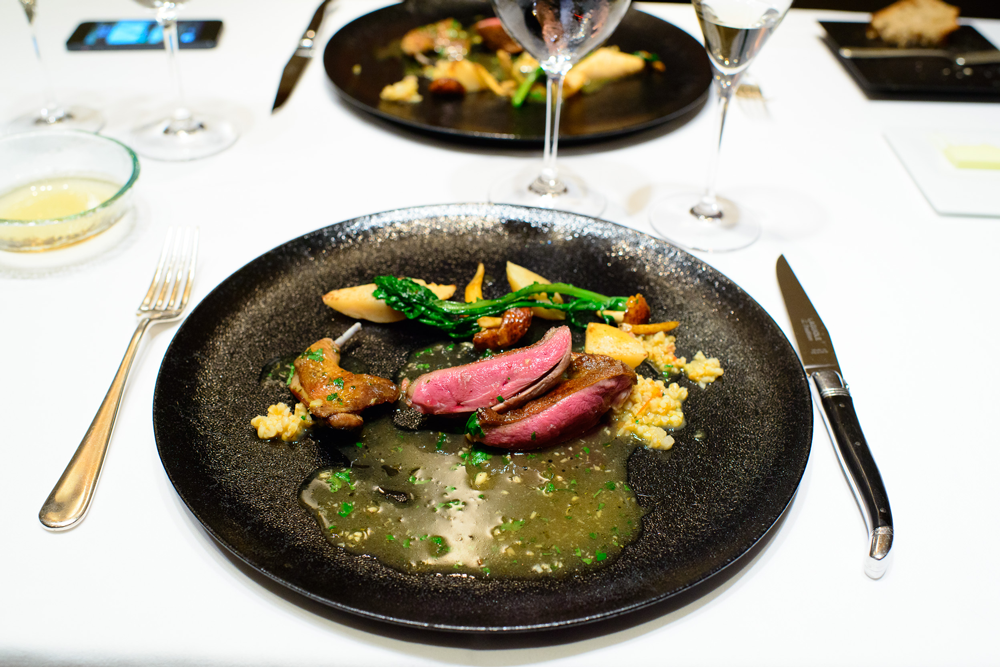
L’ATELIER DE JOEL ROBUCHON BANGKOK - THAILAND
L’Atelier de Joël Robuchon Bangkok, serving French haute cuisine with a focus on the meticulous preparation of taste, texture and style, is part of the prestigious restaurant group run by Joël Robuchon. He has been called ‘Chef of the Century’ by the Gault Millau Guide, and has an unparalleled 28 Michelin stars awarded to his restaurants across the world. The kitchen is headed by Executive Chef Olivier Limousin, previously at the two Michelin star restaurant L’Atelier de Joël Robuchun in London. The cooking is characterized by rich flavours and distinct tastes as, for example, the Rosavalt potato salad with rolled cylinders of foie gras terrine, rocket salad and large shavings of white truffle. Ingredients are sourced locally although delicacies are imported for some dishes. Wine is a central aspect of the food experience and there is a focus on sustainable, organic and biodynamic wines. Relentlessly striving for perfection, the style, service and food have all stayed true to the philosophy of the brand and will delight the gourmet crowd in the City.

LA MAISON 1888 - VIETNAM
La Maison 1888 offers exquisite French fine dining within the luxurious Intercontinental Danang Sun Peninsula Resort. La Maison’s dining room, overlooking Bai Bac beach on the Son Tra Peninsula, juts into the East Sea slightly north of Da Nang. The black and white interior design is inspired by a colonial French mansion and features high stucco ceilings and glittering chandeliers. Michelinstar Chef, Pierre Gagnaire, created the menu and personally visits several times a year to produce an extensive menu of French fusion cuisine. The kitchen will operate with a small staff of 10 to produce highly recommended dishes such as sea bass carpaccio, lobster tail, roasted veal tenderloin, suckling pig with bigarade sauce, salted mackerel and poached octopus. An accomplished sommelier is also available to pair wines to each dish. As Gagnaire puts it, a dining experience is about more than the food. It’s about “the service, the dining room, the light, the people” and La Maison has it all.
